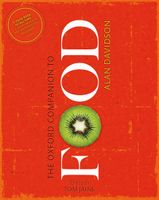Advertisement
Alcohol
Published 2014
Apart from its use as a drink, to which many volumes have been devoted, alcohol has a role as an ingredient in cookery. Many examples of the use of locally popular alcoholic drinks in the foods of different areas exist, from beer in Belgium to saké in the Orient. Grape-based alcohols—wine, champagne, port, sherry, Marsala, brandy, and other spirits distilled from grapes—have a global importance. The wide distribution of viticulture, the extensive trade in wines, their distinctive flavours, and the influence of French kitchen practice have all contributed to this. However, dietary laws forbid Muslims to use alcohol in any form, including as an ingredient (see muslims and food).


